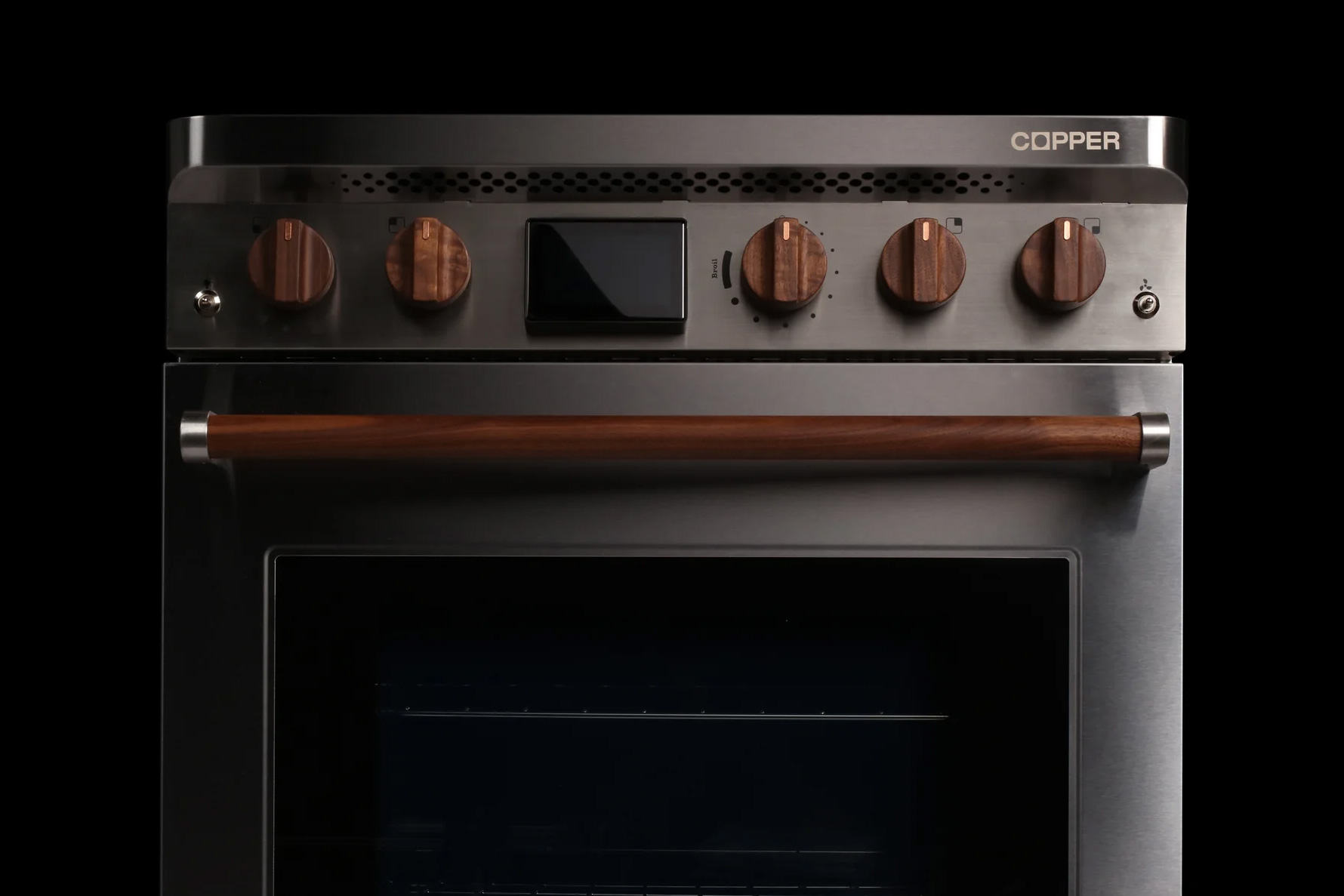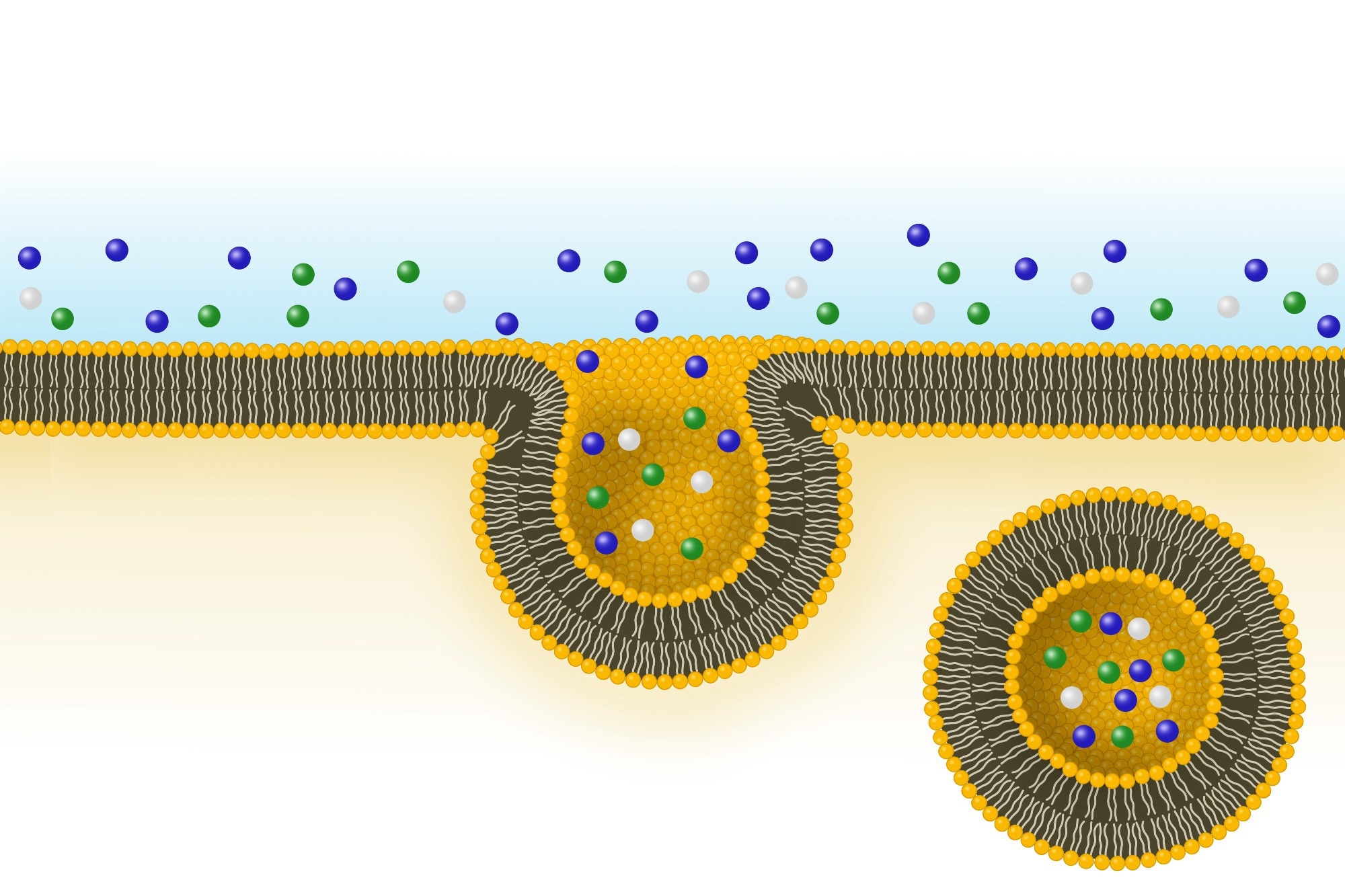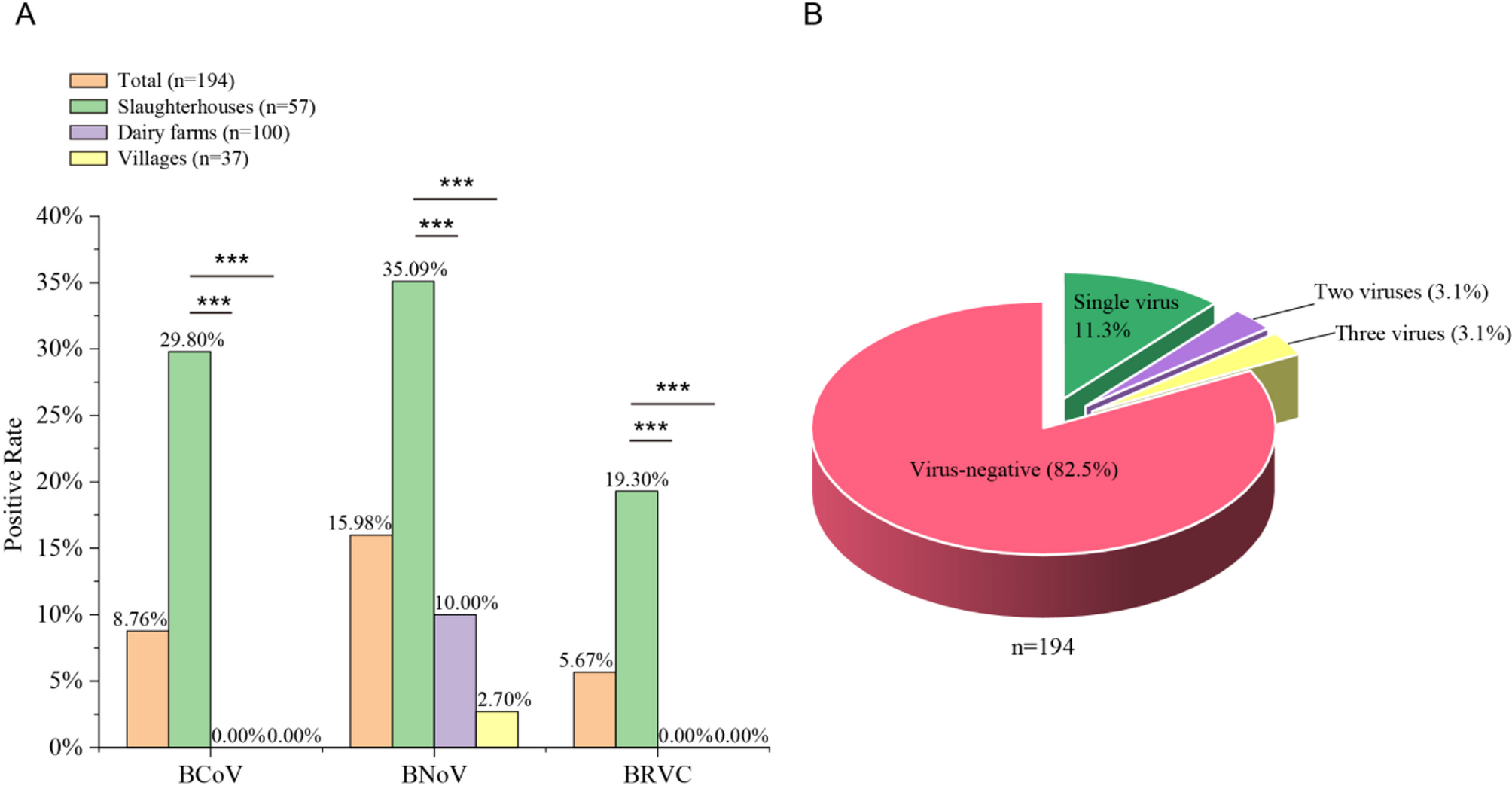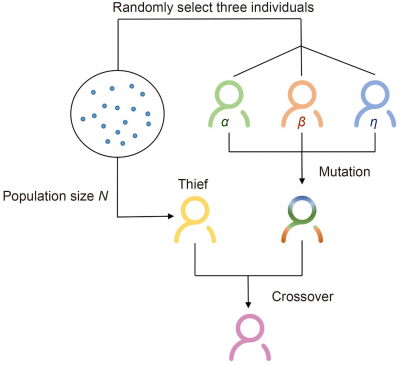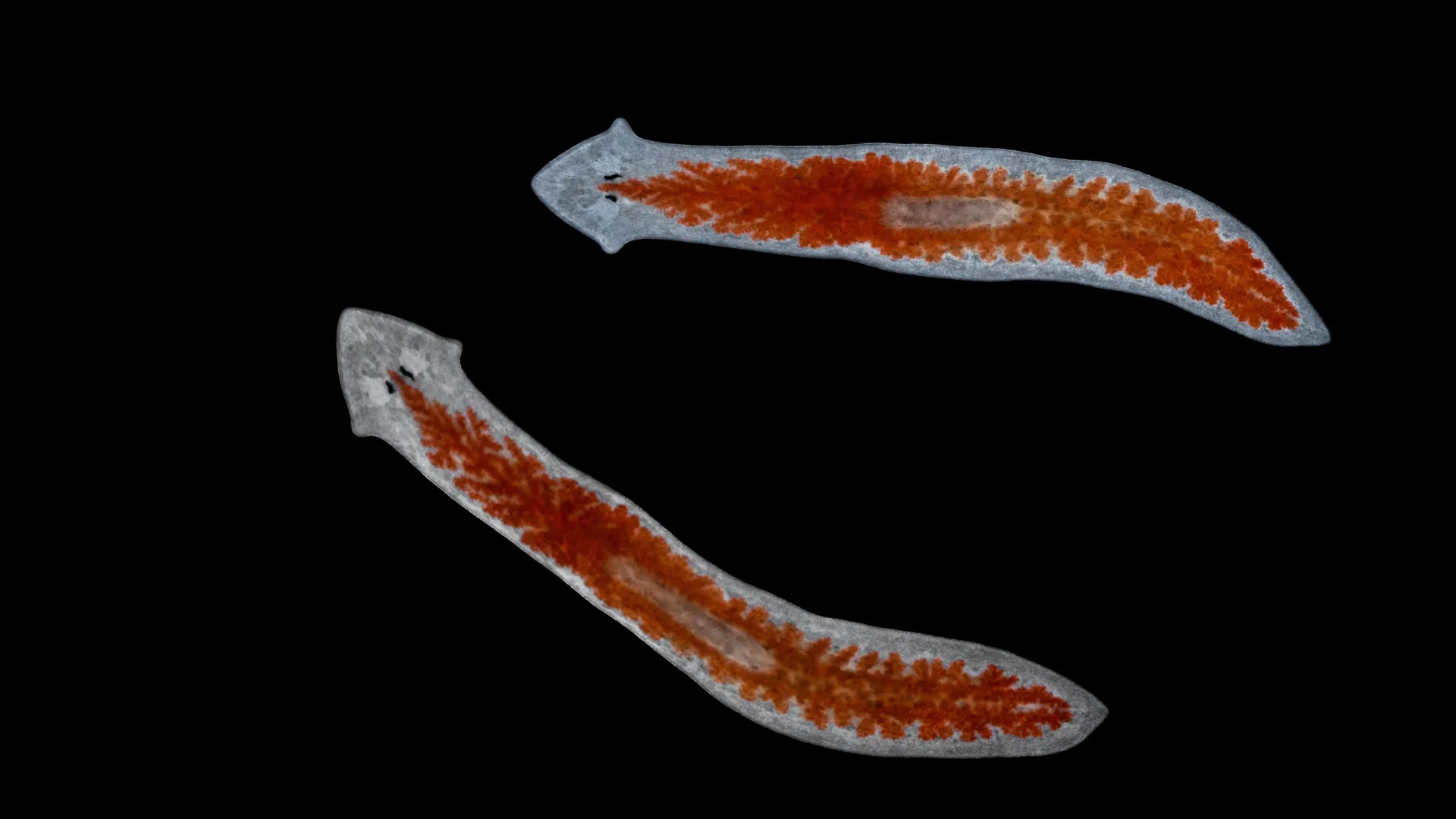As batteries have gotten cheaper and more powerful, they have enabled the electrification of everything from vehicles to lawn equipment, power tools, and scooters. But electrifying homes has been a slower process. That’s because switching from gas appliances often requires ripping out drywall, running new wires, and upgrading the electrical box.
Now the startup Copper, founded by Sam Calisch SM ’14, PhD ’19, has developed a battery-equipped kitchen range that can plug into a standard 120-volt wall outlet. The induction range features a lithium iron phosphate battery that charges when energy is cheapest and cleanest, then delivers power when you’re ready to cook.
“We’re making ‘going electric’ like an appliance swap instead of a construction project,” says Calisch. “If you have a gas stove today, there is almost certainly an outlet within reach because the stove has an oven light, clock, or electric igniters. That’s big if you’re in a single-family home, but in apartments it’s an existential factor. Rewiring a 100-unit apartment building is such an expensive proposition that basically no one’s doing it.”
Copper has shipped about 1,000 of its battery-powered ranges to date, often to developers and owners of large apartment complexes. The company also has an agreement with the New York City Housing Authority for at least 10,000 units.
Once installed, the ranges can contribute to a distributed, cleaner, and more resilient energy network. In fact, Copper recently piloted a program in California to offer cheap, clean power to the grid from its home batteries when it would otherwise need to fire up a gas-powered plant to meet spiking electricity demand.
“After these appliances are installed, they become a grid asset,” Calisch says. “We can manage the fleet of batteries to help provide firm power and help grids deliver more clean electricity. We use that revenue, in turn, to further drive down the cost of electrification.”
Finding a mission
Calisch has been working on climate technologies his entire career. It all started at the clean technology incubator Otherlab that was founded by Saul Griffith SM ’01, PhD ’04.
“That’s where I caught the bug for technology and product development for climate impact,” Calisch says. “But I realized I needed to up my game, so I went to grad school in [MIT Professor] Neil Gershenfeld’s lab, the Center for Bits and Atoms. I got to dabble in software engineering, mechanical engineering, electrical engineering, mathematical modeling, all with the lens of building and iterating quickly.”
Calisch stayed at MIT for his PhD, where he worked on approaches in manufacturing that used fewer materials and less energy. After finishing his PhD in 2019, Calisch helped start a nonprofit called Rewiring America focused on advocating for electrification. Through that work, he collaborated with U.S. Senate offices on the Inflation Reduction Act.
The cost of lithium ion batteries has decreased by about 97 percent since their commercial debut in 1991. As more products have gone electric, the manufacturing process for everything from phones to drones, robots, and electric vehicles has converged around an electric tech stack of batteries, electric motors, power electronics, and chips. The countries that master the electric tech stack will be at a distinct manufacturing advantage.
Calisch started Copper to boost the supply chain for batteries while contributing to the electrification movement.
“Appliances can help deploy batteries, and batteries help deploy appliances,” Calisch says. “Appliances can also drive down the installed cost of batteries.”
The company is starting with the kitchen range because its peak power draw is among the highest in the home. Flattening that peak brings big benefits. Ranges are also meaningful: It’s where people gather around and cook each night. People take pride in their kitchen ranges more than, say, a water heater.
Copper’s 30-inch induction range heats up more quickly and reaches more precise temperatures than its gas counterpart. Installing it is as easy as swapping a fridge or dishwasher. Thanks to its 5-kilowatt-hour battery, the range even works when the power goes out.
“Batteries have become 10 times cheaper and are now both affordable and create tangible improvements in quality of life,” Calisch says. “It’s a new notion of climate impact that isn’t about turning down thermostats and suffering for the planet, it’s about adopting new technologies that are better.”
Scaling impact
Calisch says there’s no way for the U.S. to maintain resilient energy systems in the future without a lot of batteries. Because of power transmission and regulatory limitations, those batteries can’t all be located out on the grid.
“We see an analog to the internet,” Calisch says. “In order to deliver millions of times more information across the internet, we didn’t add millions of times more wires. We added local storage and caching across the network. That’s what increased throughput. We’re doing the same thing for the electric grid.”
This summer, Copper raised $28 million to scale its production to meet growing demand for its battery equipped appliances. Copper is also working to license its technology to other appliance manufacturers to help speed the electric transition.
“These electric technologies have the potential to improve people’s lives and, as a byproduct, take us off of fossil fuels,” Calisch says. “We’re in the business of identifying points of friction for that transition. We are not an appliance company; we’re an energy company.”
Looking back, Calisch credits MIT with equipping him with the knowledge needed to run a technical business.
“My time at MIT gave me hands-on experience with a variety of engineering systems,” Calisch. “I can talk to our embedded engineering team or electrical engineering team or mechanical engineering team and understand what they’re saying. That’s been enormously useful for running a company.”
He adds: “I also developed an expansive view of infrastructure at MIT, which has been instrumental in launching Copper and thinking about the electrical grid not just as wires on the street, but all of the loads in our buildings. It’s about making homes not just consumers of electricity, but participants in this broader network.”
